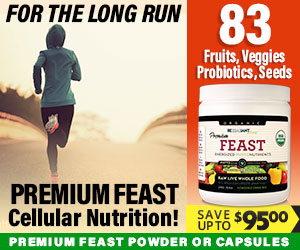- 1. Organic Chicken Breast
- 2. Quinoa
- 3. Eggs
- 4. Greek Yogurt
- 5. Soybeans and Edamame
- 6. Lentils
- 7. Canned Tuna
- 8. Nuts and Seeds
- 9. Cottage Cheese
- 10. Tempeh
1. Organic Chicken Breast
Why Choose Organic Chicken
Organic chicken breast remains a top choice for those seeking a high-quality, whole food protein source in 2025. Certified organic poultry is raised without antibiotics and synthetic hormones, ensuring a cleaner protein option. This aligns with the growing consumer demand for sustainable and healthy eating habits.
Chicken breast provides about 31 grams of protein per 100 grams, making it a lean, effective way to meet daily protein needs. When sourced organically, it not only boosts your intake of whole food protein but also reduces exposure to potential residues of antibiotics or growth hormones.
Integrating organic chicken into your diet can be straightforwardâgrilled, baked, or stir-friedâadding versatility and flavor while maintaining nutritional integrity.
Practical Tips for Including Chicken in Your Diet
- Opt for free-range organic options whenever possible for better taste and ethical considerations.
- Prepare annual meal plans focusing on lean meats like chicken to improve overall health.
- Use herbs and spices to enhance flavor without added sodium or preservatives.
2. Quinoa
Quinoa as a Complete Whole Food Protein
Often referred to as a supergrain, quinoa is unique among plant-based sources because it contains all nine essential amino acids, qualifying it as a complete whole food protein. In 2025, quinoa remains a popular choice for vegetarians, vegans, and anyone looking to diversify their protein sources.
With approximately 8 grams of protein per cooked cup, quinoa offers a nutritious base for salads, bowls, and side dishes. Its versatility and high nutrient density make it an ideal addition to a balanced diet.
Moreover, quinoa is rich in fiber, vitamins, and minerals, supporting overall health while providing effective whole food protein.
Cooking and Serving Tips
- Rinse quinoa thoroughly to remove saponins, which can cause bitterness.
- Use vegetable or chicken broth instead of water for more flavor.
- Combine with vegetables, nuts, and lean proteins for a complete and satisfying meal.
3. Eggs
Eggs: A Nutrient-Dense Whole Food Protein
Eggs are one of the most accessible and nutrient-dense sources of whole food protein. Each large egg contains about 6 grams of protein along with essential fats, vitamins, and minerals, making it a versatile staple in 2025 diets.
From breakfast to dinner, eggs can be prepared in many ways: boiled, scrambled, poached, or turned into frittatas. Their natural packaging also makes them a convenient portable protein source.
Notably, eggs have high bioavailability, meaning your body absorbs and uses their protein efficiently, which supports muscle growth and overall wellness.
Maximizing Benefits with Eggs
- Incorporate eggs into your breakfast routine for sustained energy throughout the day.
- Pair eggs with vegetables for added fiber and micronutrients.
- Choose pasture-raised eggs for superior nutrient content.
4. Greek Yogurt
Greek Yogurt as a Premium Whole Food Protein
In 2025, Greek yogurt continues to be a favorite dairy-based whole food protein. It provides approximately 10 grams of protein per 100 grams and contains probiotics that benefit gut health.
Greek yogurt is thick, creamy, and versatile: perfect for breakfast, smoothies, or as a snack. Its high protein content helps keep you full longer, making it an excellent choice for weight management.
Opt for unsweetened, plain Greek yogurt to avoid added sugars. You can enhance flavor with fresh fruit, nuts, or a drizzle of honey.
Choosing & Using Greek Yogurt
- Check labels for high protein and low added sugar content.
- Add a sprinkle of chia seeds or flaxseeds for extra fiber and omega-3s.
- Combine with whole food sources like berries and oats for a nutrient-packed meal.
5. Soybeans and Edamame
Plant-Based Powerhouses for Whole Food Protein
Soybeans and their young, green counterparts, edamame, are exceptional sources of complete plant-based whole food protein. In 2025, plant-forward diets emphasize these legumes for their high protein contentâaround 17 grams per 100 grams of cooked soybeans.
Incorporating soy products can support muscle development, hormone balance, and overall health, especially for vegetarians and vegans.
Beyond protein, soybeans are rich in isoflavones, which have antioxidant properties. They classify as a sustainable and versatile protein option.
Ways to Incorporate Soy into Your Meals
- Add cooked edamame to salads or soups for a quick protein boost.
- Use tofu or tempeh as meat substitutes in stir-fries and sandwiches.
- Include roasted soy nuts as snacks for a crunchy, nutrient-dense treat.
6. Lentils
Lentils: An Accessible and Complete Whole Food Protein
Lentils are a dietary staple for many around the world due to their affordability, high protein content, and versatility. A cooked cup provides about 18 grams of protein along with fiber, vitamins, and minerals.
They are also excellent for supporting digestive health and stabilizing blood sugar levels. In 2025, lentils remain a cornerstone of plant-based diets, fitting well into soups, salads, or veggie-packed bowls.
By combining lentils with whole grains like rice or oats, you can enhance the overall amino acid profile for a complete protein meal.
Huge Discount on the Best Certified Organic Whole Food Supplement!
Cooking Tips and Nutritional Highlights
- Pre-soak lentils for easier digestion and shorter cooking times.
- Use herbs like cumin and turmeric to boost flavor and anti-inflammatory benefits.
- Make hearty lentil soups or salads for quick, nutritious meals.
7. Canned Tuna
Convenient and Effective Whole Food Protein
Canned tuna remains a practical and high-quality source of whole food protein, providing about 25 grams per 100 grams. It is rich in omega-3 fatty acids, supporting heart and brain health.
Its convenience makes it suitable for quick sandwiches, salads, or pasta dishes, especially in 2025 where busy lifestyles demand fast, nutrient-dense options.
Choosing sustainably sourced canned tuna ensures environmental responsibility while reaping its health benefits.
Incorporating Canned Tuna into Your Diet
- Mix tuna with Greek yogurt, herbs, and lemon for a protein-packed salad.
- Use it as a topping for whole grain crackers or bread for a quick snack.
- Add to pasta with vegetables for a complete meal.
8. Nuts and Seeds
Powerful Whole Food Protein for Snacks and Meals
Nuts and seeds such as almonds, chia seeds, pumpkin seeds, and walnuts are excellent sources of plant-based whole food protein along with healthy fats. Although they are calorie-dense, they provide around 5-8 grams of protein per ounce.
In 2025, integrating a variety of nuts and seeds into your diet can support heart health, energy, and satiety. They are perfect as snacks, toppings, or ingredients in homemade granola or energy bars.
For maximum benefits, opt for raw or minimally processed options to retain their nutrient profiles.
Usage Tips for Nuts and Seeds
- Add chia or flaxseed to smoothies or oatmeal for extra protein and omega-3s.
- Use nut butters on whole grain toast for a filling breakfast.
- Combine mixed nuts and seeds for a nutritious trail mix.
9. Cottage Cheese
Cottage Cheese: A High-Quality Whole Food Protein
Cottage cheese is a dairy-based whole food protein that provides about 11 grams per 100 grams. Itâs low in fat and carbs, yet rich in casein protein, which digests slowly, providing sustained amino acids to muscles.
It’s an ideal post-workout snack or meal component, especially in 2025 where muscle preservation and recovery are prioritized.
Additionally, cottage cheese supplies calcium, B vitamins, and other micronutrients essential for bones and overall health.
Tips for Enjoying Cottage Cheese
- Combine with fruit and a drizzle of honey for a sweet option.
- Mix with chopped vegetables and herbs for a savory snack or meal.
- Use it as a base for healthy dips and spreads.
10. Tempeh
Fermented Soy for Sustainable Whole Food Protein
Tempeh is a fermented soybean product that offers about 19 grams of complete protein per 100 grams. Its fermentation process increases digestibility and enhances probiotic benefits, making it a healthful choice in 2025 diets.
Tempeh has a firm texture and nutty flavor suitable for stir-fries, sandwiches, and salads. Its plant-based protein profile supports vegan and vegetarian diets effectively.
Plus, tempeh provides fiber, vitamins, and minerals, contributing to overall dietary quality and gut health.
Cooking & Serving Ideas
- Marinate and pan-fry for a crispy topping.
- Cube and add to vegetable stir-fries.
- Use as a filling for tacos or wraps.
FAQs about Whole Food Protein in 2025
What is the best source of whole food protein for vegetarians?
Plant-based options like quinoa, soybeans, lentils, and tempeh are outstanding sources of whole food protein for vegetarians, providing all essential amino acids and supporting a balanced diet.
How much whole food protein do I need daily?
The general recommendation for adults is about 0.8 grams of protein per kilogram of body weight, but active individuals may require moreâup to 1.2-2.0 grams per kilogram. Incorporating diverse whole food protein sources ensures meeting these needs in 2025.
Are organic or sustainably sourced proteins better?
Yes, choosing organic and sustainably sourced proteins reduces exposure to harmful chemicals and supports environmental health. In 2025, consumers are increasingly prioritizing these options for health and ethical reasons.
Can I get enough protein without animal products?
Absolutely. With the variety of plant-based whole food proteins like beans, nuts, seeds, and soy products, a well-planned vegetarian or vegan diet can easily meet daily protein requirements.
Conclusion
In 2025, understanding the importance of effective whole food protein sources is key to maintaining health, building muscle, and supporting sustainability. From organic chicken breast to tempeh, each of the ten foods listed above offers unique benefits and versatility to suit any diet. Incorporating a variety of these whole food protein options can enhance your nutritional intake while aligning with current trends emphasizing natural, minimally processed foods. Remember, prioritizing the exact keyword phrase ‘whole food protein’ in your diet choices ensures you’re getting nutrient-dense, balanced nutrition tailored for optimal wellness in 2025 and beyond.




